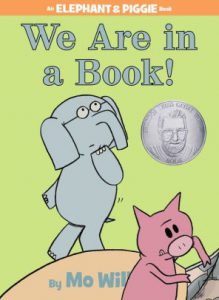One of the aspects of our current cultural conversation, especially in regards to a digital presence, is the observation that many, many, too many people don’t know how to distinguish between a reliable source and an unreliable source. Many, many, too many people don’t know how to search and find multiple perspectives. This is something that impacts our ability to make compassionate connections and conversations with each other as well as our ability to make informed and educated decisions.
For me as a reading professional, this is a heartbreaking reality because this is what my graduate work focused on: how to develop critical literacy. This was a bit of a revolutionary goal for me as a teacher in high poverty schools because there was so emphasis of developing grade-level literacy BEFORE developing critical literacy. But are they really different? I would argue that critical literacy, digital literacy, and researching skills like distinguishing between reliable and unreliable sources are all a part of literacy. If that is the case, then what we have is a literacy crisis.
I appreciate and support parents, teachers, and indeed ministers who are making efforts to include diverse voices into their own personal reading as well as in their instruction and curriculum. While including authors and voices from different perspectives and backgrounds certainly is important, it is not the only tactic we can take to develop critical literacy.
One of the best books, I’ve ever encountered and that is powerful no matter the age of the audience is Voices in the Wind by Anthony Brown. Buy this book. You will see how one day in the park can look so different because of the person who is experiencing that trip to the park.
We love Sandra Boynton books because they are fun and silly, but there are two books that ask readers to look at a story from multiple perspectives by having almost the exact same page in both books.
 The top spread is from But Not the Hippopotamus and the bottom spread is from But Not the Armadillo. We can’t read one book without reading the other book now with our three-year-old and then lining up the books just like this to compare and contrast the two pages. This is an amazing critical literacy experience in a fun and non-threatening way.
The top spread is from But Not the Hippopotamus and the bottom spread is from But Not the Armadillo. We can’t read one book without reading the other book now with our three-year-old and then lining up the books just like this to compare and contrast the two pages. This is an amazing critical literacy experience in a fun and non-threatening way.
Our other favorite is We Are in a Book by Mo Williems. This book invites the characters to break the third wall and realize that they are characters in a book. What a powerful way to illustrate that there is a greater story and that it is not only about us.
The best way we can overcome the literacy crisis we have is to work within ourselves to ask good questions and to work with the people in our lives: children, parents, congregants to look at a story from multiple perspectives and different voices with a calm and understanding presence. Sometimes using children’s literature makes practicing that just a little easier and more fun.


